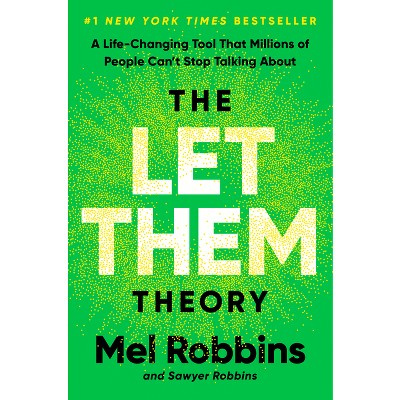Sponsored

A Fragile Movement - (Controversies in Science) by Juliet Saltman (Hardcover)
In Stock
Sponsored
About this item
Highlights
- This study deals with the effects of the neighborhood stabilization movement, which was formed to maintain community racial integration.
- About the Author: JULIET SALTMAN is Professor Emerita of Sociology at Kent State University, Kent, Ohio.
- 470 Pages
- Freedom + Security / Law Enforcement, Discrimination
- Series Name: Controversies in Science
Description
About the Book
This study deals with the effects of the neighborhood stabilization movement, which was formed to maintain community racial integration. It is the first socio-historical analysis of the movement. As Saltman discovered, it is easier to attain integration than to maintain it. The study sought to identify the factors that lead to success or failure in maintaining community racial integration. While it includes quantitative data, this work also reveals the feelings, hopes, and passion of the people involved in the struggle.
The book is divided into four parts. The first section deals with the methodological and analytical framework of the study, as well as offering perspectives on social movements in general and the neighborhood stabilization movement in particular. Part Two is an analysis of the movement on the community level in terms of its development and results. It presents five detailed case studies and ten brief profiles of urban and suburban movement efforts. In Part Three, the national level of the movement is discussed in terms of its development and its interaction with local movement organizations. The impact of the national climate on both levels and the movement as a whole is explored. Part Four outlines conclusions and policy implications of the study and offers a strategy for maintaining racial integration in urban neighborhoods.
Book Synopsis
This study deals with the effects of the neighborhood stabilization movement, which was formed to maintain community racial integration. It is the first socio-historical analysis of the movement. As Saltman discovered, it is easier to attain integration than to maintain it. The study sought to identify the factors that lead to success or failure in maintaining community racial integration. While it includes quantitative data, this work also reveals the feelings, hopes, and passion of the people involved in the struggle.
The book is divided into four parts. The first section deals with the methodological and analytical framework of the study, as well as offering perspectives on social movements in general and the neighborhood stabilization movement in particular. Part Two is an analysis of the movement on the community level in terms of its development and results. It presents five detailed case studies and ten brief profiles of urban and suburban movement efforts. In Part Three, the national level of the movement is discussed in terms of its development and its interaction with local movement organizations. The impact of the national climate on both levels and the movement as a whole is explored. Part Four outlines conclusions and policy implications of the study and offers a strategy for maintaining racial integration in urban neighborhoods.Review Quotes
"It's a wonderful book--fantastically well-researched, beautifully written, thoughtful, intelligent, with excellent concepts, insights, and ideas....And I have never, in any field, seen a book that combines half so well the objective eye of the scientist/observer with the caring concern of the participant/advocate."-Jean Milgram Psychologist, civil rights activist Ex-Director of National Neighbors
?Saltman's book examines the neighborhood stabilization movement aimed at maintaining racially integrated neighborhoods in the US. Saltman identifies the factors that lead to success or failure in maintaining racial integration. Guided by theoretical perspectives from some sociological specialties--race relations, social movements, and urban community--Part 1 presents the analytical framework and methodology. Part 2 focuses on movement organizations at the community level by analyzing case studies in the context of models of success, failure, and conditional achievement. Part 3 is devoted to a detailed assessment of a movement organization at the national level, National Neighbors. Micro-macro level interaction of movement organizations, as well as ideological and structural movement issues are discussed. Part 4 provides conclusions, suggests policy implications, and offers a strategy for maintaining racial integration in urban neighborhoods. Saltman has been successful in delineating the feelings, the hopes, the fervor, and the passion associated with this movement. Highly recommended for upper-division undergraduates and above.?-Choice
?This book deals with the effects of the neighborhood stabilization movement, which was formed to maintain community racial integration. It is the first sociohistorical analysis of the movement. The book sought to identify the factors that lead to success or failure in maintaining community racial integration. While it includes quantitative data, this work also reveals the feelings, hopes, and passion of the people involved in the struggle.?-Recent Publications in Governmental Problems
?This study examines the effects of the neighborhood stabilization movement, formed to maintain community racial integration. This study seeks to identify factors that lead to success or failure in that goal. The book opens with the methodological and analytical framework of the study, as well as with perspectives on social movements in general and the neighborhood stabilization movement in particular. The book then goes on to discuss an analysis of the movement on the community in terms of its development and results. Five case studies, together with ten brief profiles, of urban and suburban movement efforts are discussed. The successful movements are cited for the Butler-Tarkington Neighborhood Association in Indianapolis, the Nineteenth Ward Community Association in Rochester, and the Sherman Park Community Association in Milwaukee. An unsuccessful program in Hartford, CT, is cited, together with a movement that yielded mixed results, in Akron, OH. The national level of the movement is discussed in terms of its development and its interaction with the local movement. Conclusions and policy implications of this study are then offered and a strategy outlined for maintaining racial integration in urban neighborhoods.?-Sage Urban Studies Abstracts
"Saltman's book examines the neighborhood stabilization movement aimed at maintaining racially integrated neighborhoods in the US. Saltman identifies the factors that lead to success or failure in maintaining racial integration. Guided by theoretical perspectives from some sociological specialties--race relations, social movements, and urban community--Part 1 presents the analytical framework and methodology. Part 2 focuses on movement organizations at the community level by analyzing case studies in the context of models of success, failure, and conditional achievement. Part 3 is devoted to a detailed assessment of a movement organization at the national level, National Neighbors. Micro-macro level interaction of movement organizations, as well as ideological and structural movement issues are discussed. Part 4 provides conclusions, suggests policy implications, and offers a strategy for maintaining racial integration in urban neighborhoods. Saltman has been successful in delineating the feelings, the hopes, the fervor, and the passion associated with this movement. Highly recommended for upper-division undergraduates and above."-Choice
"This book deals with the effects of the neighborhood stabilization movement, which was formed to maintain community racial integration. It is the first sociohistorical analysis of the movement. The book sought to identify the factors that lead to success or failure in maintaining community racial integration. While it includes quantitative data, this work also reveals the feelings, hopes, and passion of the people involved in the struggle."-Recent Publications in Governmental Problems
"This study examines the effects of the neighborhood stabilization movement, formed to maintain community racial integration. This study seeks to identify factors that lead to success or failure in that goal. The book opens with the methodological and analytical framework of the study, as well as with perspectives on social movements in general and the neighborhood stabilization movement in particular. The book then goes on to discuss an analysis of the movement on the community in terms of its development and results. Five case studies, together with ten brief profiles, of urban and suburban movement efforts are discussed. The successful movements are cited for the Butler-Tarkington Neighborhood Association in Indianapolis, the Nineteenth Ward Community Association in Rochester, and the Sherman Park Community Association in Milwaukee. An unsuccessful program in Hartford, CT, is cited, together with a movement that yielded mixed results, in Akron, OH. The national level of the movement is discussed in terms of its development and its interaction with the local movement. Conclusions and policy implications of this study are then offered and a strategy outlined for maintaining racial integration in urban neighborhoods."-Sage Urban Studies Abstracts
About the Author
JULIET SALTMAN is Professor Emerita of Sociology at Kent State University, Kent, Ohio. She has written Open Housing: Dynamics of a Social Movement (Praeger, 1978), Integrated Neighborhoods in Action and Open Housing as a Social Movement: Challenge, Conflict, and Change, well as articles appearing in Housing and Society, the Journal of Voluntary Action Research, the Annals of the Academy of Political and Social Science, Journal of Urban Affairs, the Journal of Sociology and Social Welfare, and the Journal of Applied Behavioral Science, and other professional journals.










